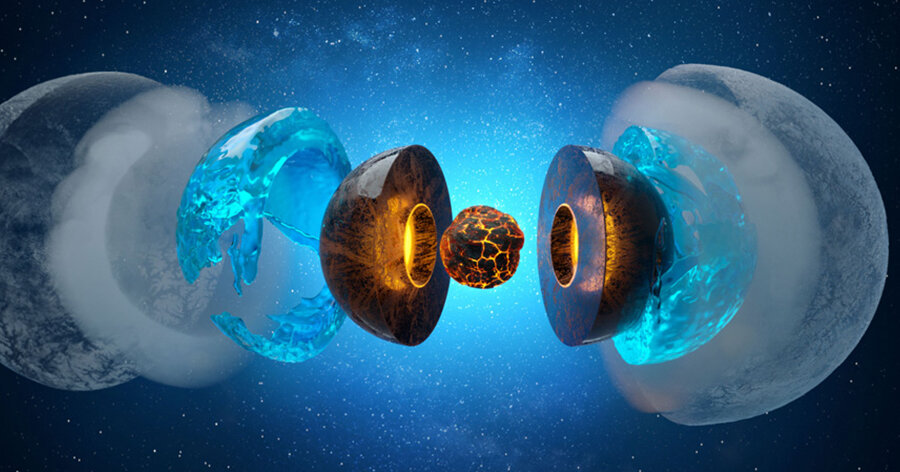A scientist simulated the contents of the ice giant worlds, and found that a fluid layer may explain each planet’s strange magnetic field.
We might finally understand what’s going on inside Uranus and Neptune, and the answer is pretty surprising: They may each contain an ocean of water.
“We didn’t really know anything before,” about their interiors, said Adam Masters, a space and planetary scientist at Imperial College London. “So this hypothesis is very compelling.”
The idea about the two ice giant planets — so-called because of the freezing conditions in which they formed — was put forward by Burkhard Militzer, a planetary scientist from the University of California, Berkeley, and was published Monday in the Proceedings of the National Academy of Sciences. It could explain the strange magnetic fields of both worlds, which are unlike any other in the solar system.
Earth’s magnetic field is generated in its core, producing a clear north and south pole known as a dipole that roughly aligns with the axis of the planet. “It’s like there’s a big, giant bar magnet inside the planet,” said Heidi Hammel, an astronomer and planetary scientist at the Association of Universities for Research in Astronomy. “That’s true for Jupiter, Saturn, Earth and some of the moons of Jupiter as well.”
When NASA’s Voyager 2 spacecraft flew past Uranus in 1986, however, it discovered something unusual. “The magnetic field was hugely tilted and offset from the center of the planet,” Dr. Hammel said. At first, scientists thought the disordered field could be explained by a suspected giant impact early in Uranus’s life, which had knocked the planet on its side. But then the spacecraft flew past Neptune three years later and “its magnetic field was also significantly tilted,” Dr. Hammel said.
Dr. Militzer’s proposal aims to settle this debate. It is based on simulating the motion of 500 atoms to model the interiors of the two ice giants, and it suggests there is a layer of water about 5,000 miles thick inside the two planets sitting beneath their outer atmospheres.
